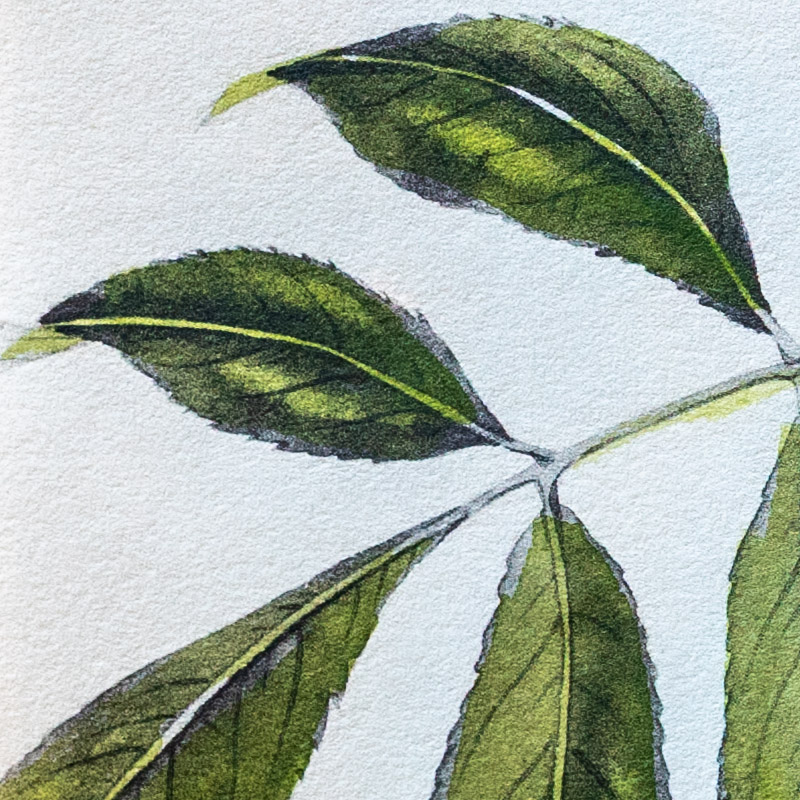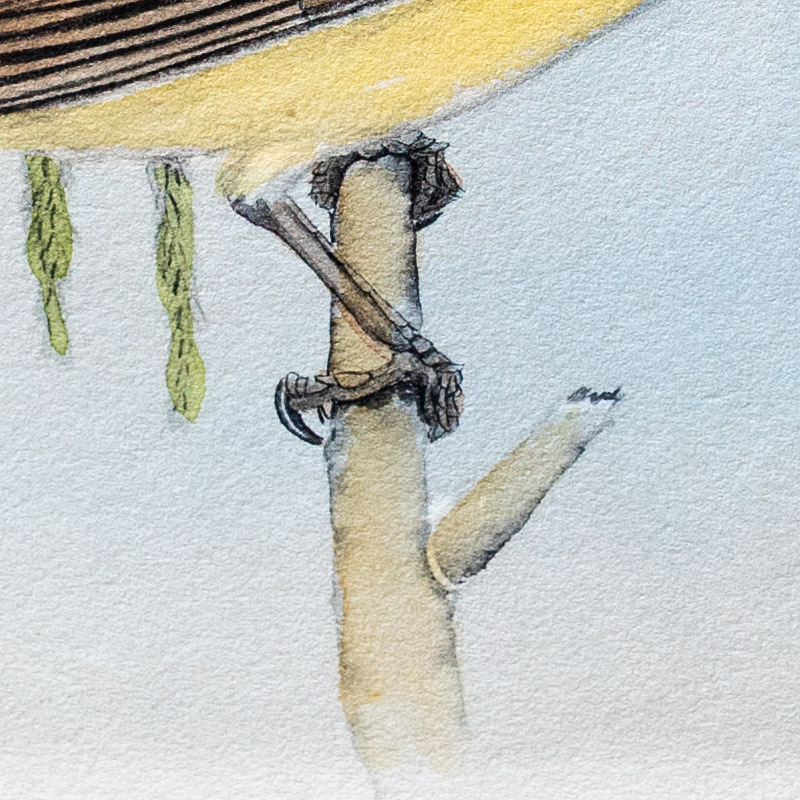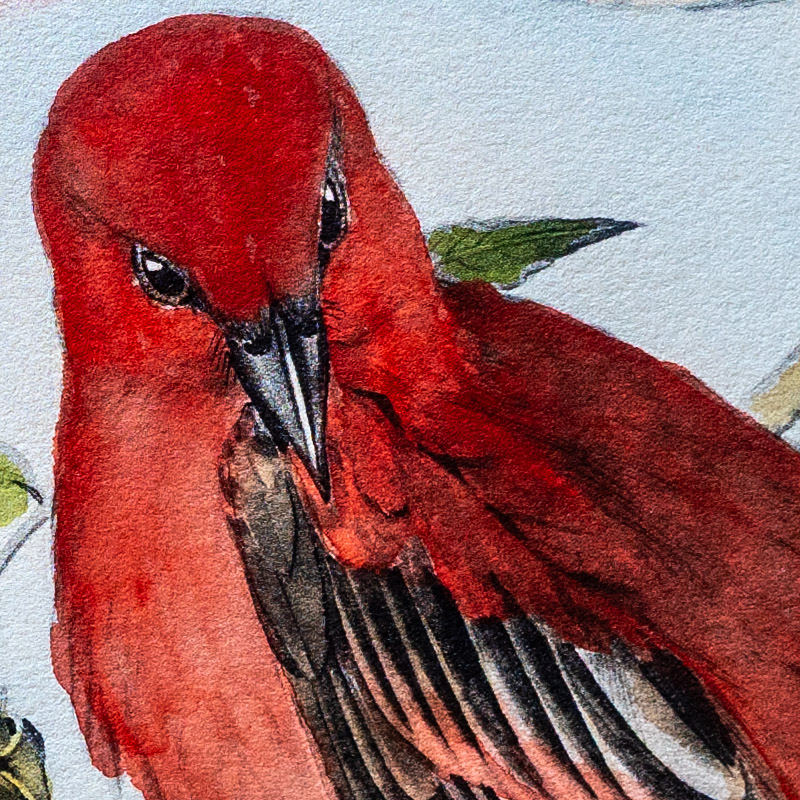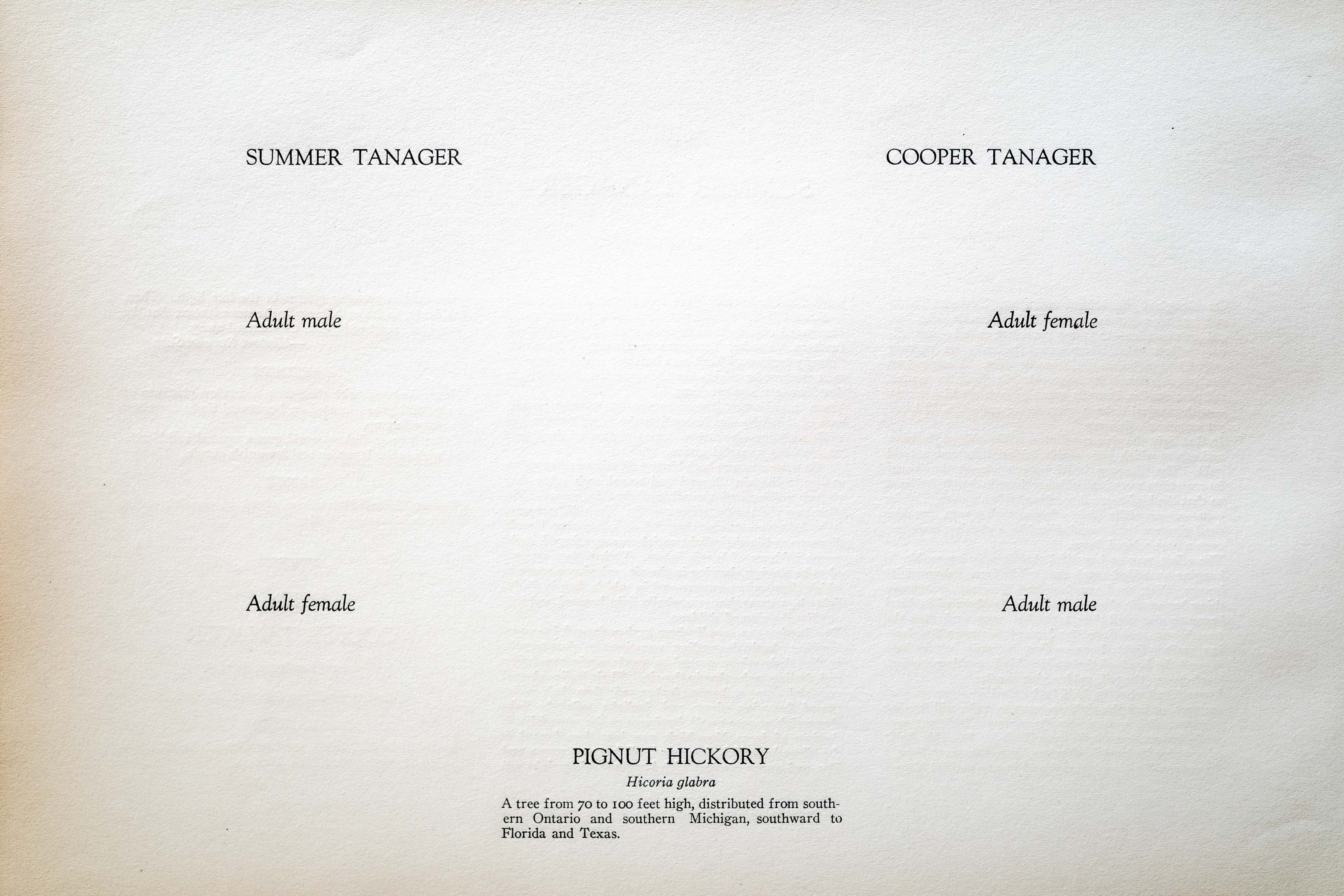






1912
1930
10
610-610a
A team of dedicated board members, volunteers, and student interns has published every page in Volume 9. This volume includes 360 images of paintings and lyrical descriptions of birds, now available online for everyone to enjoy anywhere in the world. This is a monumental task. Each volume requires approximately 400 hours to photograph, edit, transcribe, catalog, and publish online. We need your support to complete this work.
If you're tech-savvy, have a good eye, are meticulous with details, and love structured data, please consider volunteering by emailing us at hello@rexbrasher.org.
We encourage all bird lovers and supporters to consider a monetary donation to support our mission to make Rex's work available for everyone. You can provide a one-time or recurring donation online.
On a longleaf pine branch was a rosy SUMMER TANAGER against a glowing sunset sky. On both sides, two tall pine candles — as young pines are called — slim, silvery yellow spikes of unopened leaves erect at twig ends like candles on a Christmas tree. Long golden sunbeams touched the scene — bright bird in center tall pine candles, lustrous green foliage, the lilac trunks — with magical light, a glimmering radiance, brilliant yet exquisitely delicate.
In that light the pine candles on either side of the bird, and others which were visible behind it, became a vivid gold. The Tanager itself became almost luminous; its rosy tints were intensified and made doubly brilliant so that the bird seemed to shine with a radiance of its own — an exquisite pink effulgence that was not like dead pigment but seemed alive like a glowing ember or even a rose-colored flame.
The effect was so beautiful that it was impossible to imagine an added touch that might have enhanced its beauty. Yet, as I watched the Tanager, a strange thing happened: slowly, slowly the feathers of its head began to rise until they formed a crest and thru the translucent, rose-tinted feathers of this crest the slanting, mellow light shone so that it made a rosy halo around the head of the radiant bird perching motionless between the tall, golden pine candles.
I wondered why the bird had raised its crest at that moment, at just the right moment to make still lovelier a picture that seemed already perfect. It is not generally known that the Summer Tanager has this habit of erecting its head-feathers to form a crest; at least, I do not recall seeing it mentioned in any natural history work that I have read. It is, as a matter of fact, a fairly characteristic habit of the bird and in this instance I discovered quickly the reason for the display of crest feathers. Another Tanager was coming. I heard his "chucky-tucky-tuck" call-note before I saw him and the next moment he alighted in the same pine in which the first Tanager was perching.
Then, in an instant, the scene was transformed: a picture of still life — for heretofore the first Tanager had made no move — became a motion picture of lively and wonderfully graceful action.
At the same moment both birds took wing and came together in the air. Round and round each other they circled, sinking and ascending, their tails spread wide, their rosy pinions fluttering rapidly. They did not seem to be fighting — at least they did no injury that I could discover and in their light aerial maneuverings I could see no evidence of hostile intent. Rather, they appeared to be playing, dancing in the air, enjoying a game in which they were partners and in which they both delighted — a game that was wholly light-hearted and joyous like the play of children.
The slanting sun rays lit them as they danced, buoyantly rising, slowly descending, sometimes so close together that their wings seemed to touch, again separating and circling each other in the air. Their bodies glowed now pink, now a deeper, darker red; thru their widespread fluttering wings and fanlight tails the light shone pink as rose-petals, luminous as the most delicate skytints of dawn. Now high, now low, they danced in the silent beautiful pine wood, all lustrous green and lilac and purple. decked with hundreds of straight tall pine candles glowing golden in the late light. Then, suddenly, as tho each knew in the same instant that the game had reached its end, they darted away.
—Herbert Ravenel Sass.
NEST: As usual with the genus, a careless platform of twigs and grass, located on horizontal limbs from ten to sixty feet up.
EGGS: 3 to 4; light emerald green, spotted and blotched with sepia, lavender and brownish purple.
Eastern United States from about 40 parallel, south. West to Mississippi Valley.
Breeding similar to Summer Tanager.
Southeastern California, southern Nevada, central Arizona and northeastern New Mexico.
A tree from 70 to 100 feet high, distributed from southern Ontario and southern Michigan, southward to Florida and Texas.